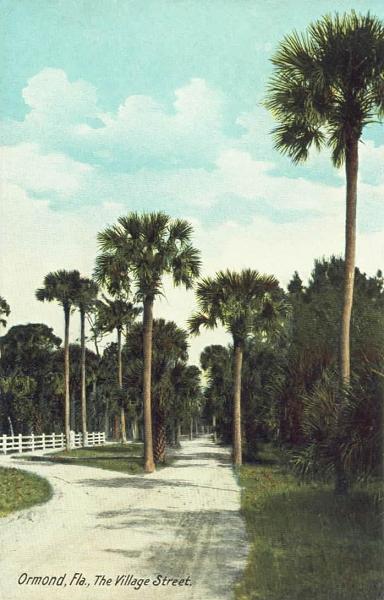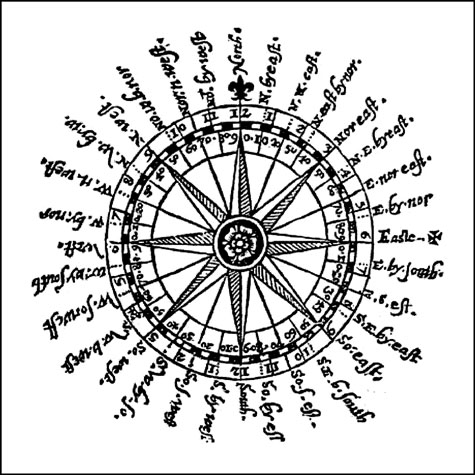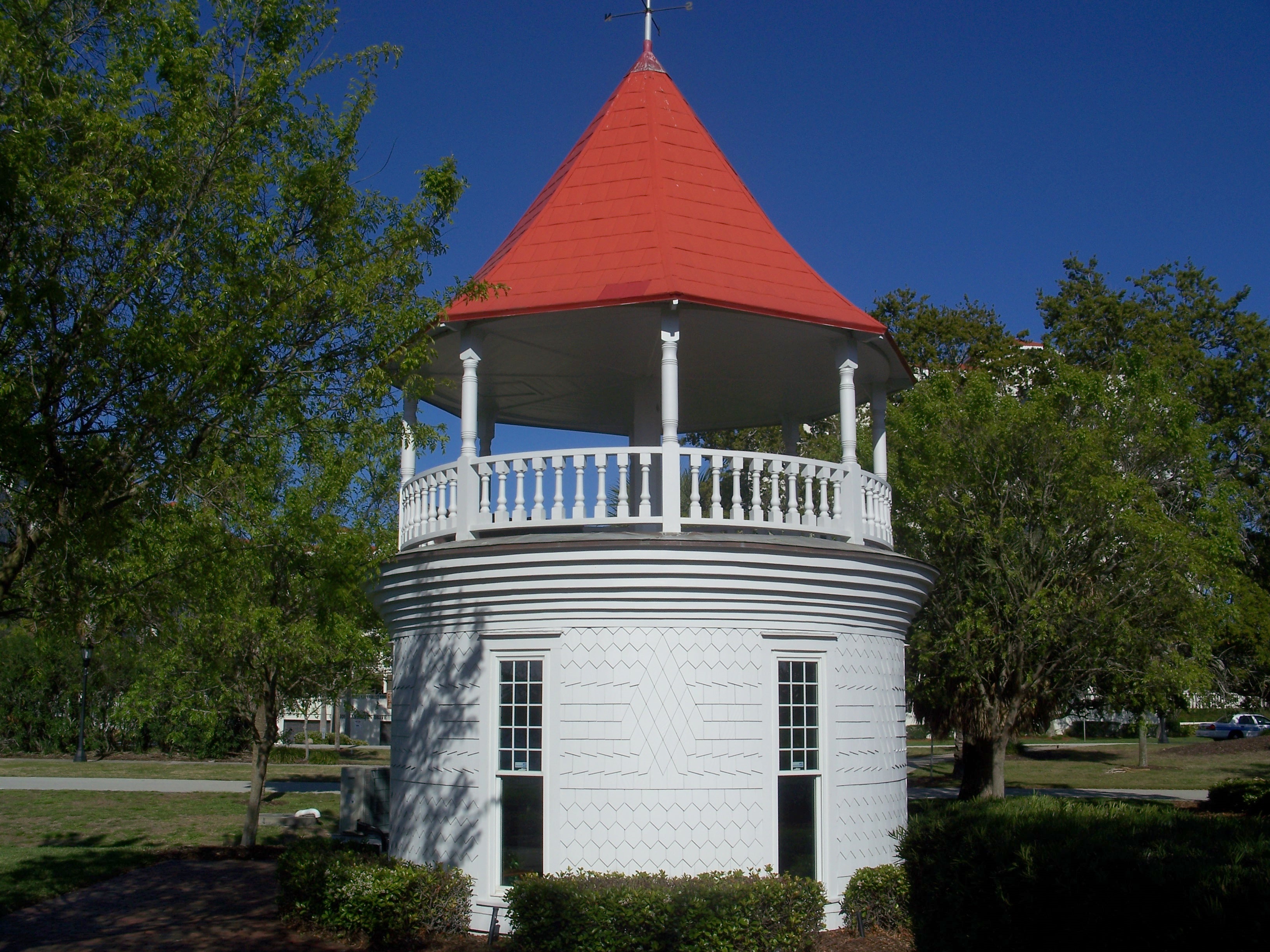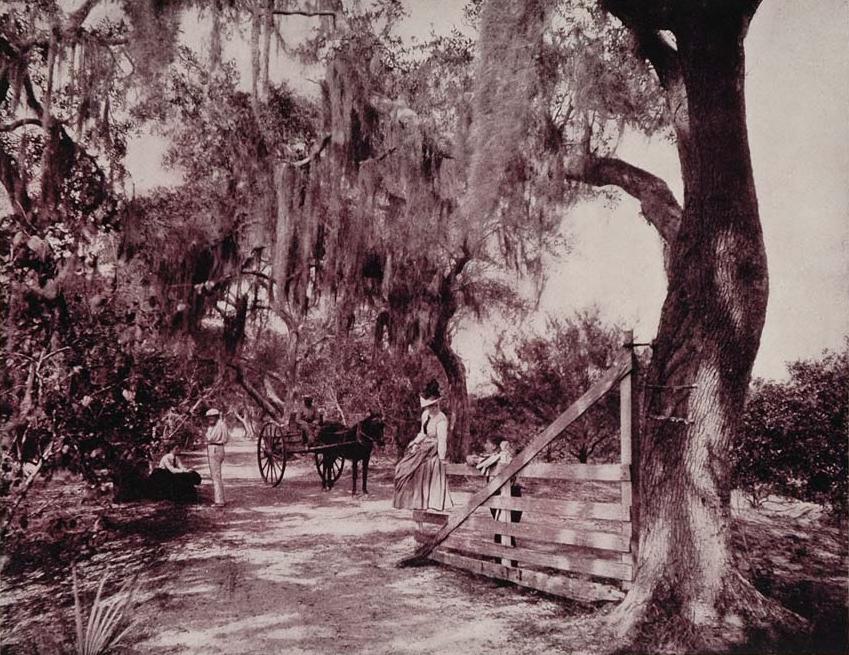|
Cobb Cottage
The Nathan Cobb Cottage at 137 Orchand Lane in Ormond Beach, Florida is a half story residential structure that was constructed in 1897 from salvaged cargo and wood parts from the shipwreck of the ''Nathan F. Cobb'' schooner. A local man named William Fagen built the cottage in the vernacular architectural style using salvaged cargo and wood parts including railroad ties, flooring, balustrades and stairs. Rubenstein, Arthur. Cobb House history saved. "Daytona Beach News-Journal". January 22, 1998, pp. 4, 14. City Vicinity History: Historic Landmarks. Located at: Ormond Beach Historical Landmarks records. Ormond Beach Historical Society. ''Nathan F. Cobb'' shipwreck On December 1, 1896, the ''Nathan F. Cobb'' schooner was heavily damaged by a nor’easter storm off the coast of North Carolina and lost two crewmen. The ship then drifted for about four days until it ran aground on a sandbar off the coast of Ormond (now Ormond Beach). While attempting to rescue the six surviving c ... [...More Info...] [...Related Items...] OR: [Wikipedia] [Google] [Baidu] |
Cottage
A cottage, during Feudalism in England, England's feudal period, was the holding by a cottager (known as a Cotter (farmer), cotter or ''bordar'') of a small house with enough garden to feed a family and in return for the cottage, the cottager had to provide some form of service to the Lord of the manor, manorial lord.Daniel D. McGarry, ''Medieval history and civilization'' (1976) p 242 However, in time cottage just became the general term for a small house. In modern usage, a cottage is usually a modest, often cosy dwelling, typically in a rural or semi-rural location and not necessarily in England. The cottage orné, often quite large and grand residences built by the nobility, dates back to a movement of "rustic" stylised cottages of the late 18th and early 19th century during the Romantic movement. In British English the term now denotes a small dwelling of traditional build, although it can also be applied to modern construction designed to resemble traditional houses ("wi ... [...More Info...] [...Related Items...] OR: [Wikipedia] [Google] [Baidu] |
Vernacular Architecture
Vernacular architecture is building done outside any academic tradition, and without professional guidance. This category encompasses a wide range and variety of building types, with differing methods of construction, from around the world, both historical and extant, representing the majority of buildings and settlements created in pre-industrial societies. Vernacular architecture constitutes 95% of the world's built environment, as estimated in 1995 by Amos Rapoport, as measured against the small percentage of new buildings every year designed by architects and built by engineers. Vernacular architecture usually serves immediate, local needs; is constrained by the materials available in its particular region; and reflects local traditions and cultural practices. Traditionally, the study of vernacular architecture did not examine formally schooled architects, but instead that of the design skills and tradition of local builders, who were rarely given any attribution for the w ... [...More Info...] [...Related Items...] OR: [Wikipedia] [Google] [Baidu] |
Ormond Beach, Florida
Ormond Beach is a city in central Florida in Volusia County. The population was 43,080 at the 2020 census. Ormond Beach lies directly north of Daytona Beach and is a principal city of the Deltona–Daytona Beach–Ormond Beach, FL Metropolitan Statistical Area. The city is known as the birthplace of speed, as early adopters of motorized cars flocked to its hard-packed beaches for yearlong entertainment, since paved roads were not yet commonplace. Ormond Beach lies in Central Eastern Florida. History Ormond Beach was once within the domain of the Timucuan Indians. Ormond Beach was frequented by Timacuan Indians, but never truly inhabited until 1643 when Quakers blown off course to the New England area ran ashore. They settled in a small encampment along the Atlantic shore. Early relations with neighboring tribes were fruitful, however, in 1704 a local Timacuan chief, Oseanoha, led a raid of the encampment killing most of the population. In 1708 Spaniards inhabited the area an ... [...More Info...] [...Related Items...] OR: [Wikipedia] [Google] [Baidu] |
Nathan F
Nathan or Natan may refer to: People *Nathan (given name), including a list of people and characters with this name *Nathan (surname) *Nathan (prophet), a person in the Hebrew Bible *Nathan (son of David), biblical figure, son of King David and Bathsheba *Nathan of Gaza, a charismatic figure who spread the word of Eli the Prophet *Starboy Nathan, a British singer who used the stage name "Nathan" from 2006 to 2011 * Nathan (footballer, born 1994), full name ''Nathan Athaydes Campos Ferreira'', Brazilian winger * Nathan (footballer, born 1995), full name ''Nathan Raphael Pelae Cardoso'', Brazilian centre back *Nathan (footballer, born 1996), full name ''Nathan Allan de Souza'', Brazilian midfielder *Nathan (footballer, born May 1999), full name ''Nathan Crepaldi da Cruz'', Brazilian forward *Nathan (footballer, born August 1999), full name ''Nathan Palafoz de Sousa'', Brazilian forward Other uses *Nathan, Queensland, a suburb of Brisbane in Australia *Nathan (band), an alt-coun ... [...More Info...] [...Related Items...] OR: [Wikipedia] [Google] [Baidu] |
Schooner
A schooner () is a type of sailing vessel defined by its rig: fore-and-aft rigged on all of two or more masts and, in the case of a two-masted schooner, the foremast generally being shorter than the mainmast. A common variant, the topsail schooner also has a square topsail on the foremast, to which may be added a topgallant. Differing definitions leave uncertain whether the addition of a fore course would make such a vessel a brigantine. Many schooners are gaff-rigged, but other examples include Bermuda rig and the staysail schooner. The origins of schooner rigged vessels is obscure, but there is good evidence of them from the early 17th century in paintings by Dutch marine artists. The name "schooner" first appeared in eastern North America in the early 1700s. The name may be related to a Scots word meaning to skip over water, or to skip stones. The schooner rig was used in vessels with a wide range of purposes. On a fast hull, good ability to windward was useful for priv ... [...More Info...] [...Related Items...] OR: [Wikipedia] [Google] [Baidu] |
Vernacular Architecture
Vernacular architecture is building done outside any academic tradition, and without professional guidance. This category encompasses a wide range and variety of building types, with differing methods of construction, from around the world, both historical and extant, representing the majority of buildings and settlements created in pre-industrial societies. Vernacular architecture constitutes 95% of the world's built environment, as estimated in 1995 by Amos Rapoport, as measured against the small percentage of new buildings every year designed by architects and built by engineers. Vernacular architecture usually serves immediate, local needs; is constrained by the materials available in its particular region; and reflects local traditions and cultural practices. Traditionally, the study of vernacular architecture did not examine formally schooled architects, but instead that of the design skills and tradition of local builders, who were rarely given any attribution for the w ... [...More Info...] [...Related Items...] OR: [Wikipedia] [Google] [Baidu] |
Railroad Ties
A railroad tie, crosstie (American English), railway tie (Canadian English) or railway sleeper (Australian and British English) is a rectangular support for the rails in railroad tracks. Generally laid perpendicular to the rails, ties transfer loads to the track ballast and subgrade, hold the rails upright and keep them spaced to the correct gauge. Railroad ties are traditionally made of wood, but prestressed concrete is now also widely used, especially in Europe and Asia. Steel ties are common on secondary lines in the UK; plastic composite ties are also employed, although far less than wood or concrete. As of January 2008, the approximate market share in North America for traditional and wood ties was 91.5%, the remainder being concrete, steel, azobé (red ironwood) and plastic composite. Tie spacing may depend on the type of tie, traffic loads and other requirements, for example 2640 concrete ties per mile on North American mainline railroads to 2112 timber ties per mile ... [...More Info...] [...Related Items...] OR: [Wikipedia] [Google] [Baidu] |
Balustrades
A baluster is an upright support, often a vertical moulded shaft, square, or lathe-turned form found in stairways, parapets, and other architectural features. In furniture construction it is known as a spindle. Common materials used in its construction are wood, stone, and less frequently metal and ceramic. A group of balusters supporting a handrail, coping, or ornamental detail are known as a balustrade. The term baluster shaft is used to describe forms such as a candlestick, upright furniture support, and the stem of a brass chandelier. The term banister (also bannister) refers to a baluster or to the system of balusters and handrail of a stairway. It may be used to include its supporting structures, such as a supporting newel post. Etymology According to the ''Oxford English Dictionary'', "baluster" is derived through the french: balustre, from it, balaustro, from ''balaustra'', "pomegranate flower" rom a resemblance to the swelling form of the half-open flower (''illust ... [...More Info...] [...Related Items...] OR: [Wikipedia] [Google] [Baidu] |
Nor’easter
A nor'easter (also northeaster; see below), or an East Coast low is a synoptic-scale extratropical cyclone in the western North Atlantic Ocean. The name derives from the direction of the winds that blow from the northeast. The original use of the term in North America is associated with storms that impact the upper north Atlantic coast of the United States and the Atlantic Provinces of Canada. Typically, such storms originate as a low-pressure area that forms within of the shore between North Carolina and Massachusetts. The precipitation pattern is similar to that of other extratropical storms. Nor'easters are usually accompanied by heavy rain or snow, and can cause severe coastal flooding, coastal erosion, hurricane-force winds, or blizzard conditions. Nor'easters are usually most intense during winter in New England and Atlantic Canada. They thrive on converging air masses—the cold polar air mass and the warmer air over the water—and are more severe in winter when t ... [...More Info...] [...Related Items...] OR: [Wikipedia] [Google] [Baidu] |
Ormond Hotel
The Ormond Hotel (also known as The Flagler Hotel) was a historic hotel in Ormond Beach, Florida, United States. It was located at 15 East Granada Boulevard. History Built by John Anderson and J. D. Price, the hotel opened on January 1, 1888. By spring of 1889, the Florida East Coast Railway extended its service from Jacksonville to Daytona, and railroad magnate Henry Flagler bought The Ormond Hotel and enlarged it to handle 600 guests. It became one in a series of his hotels positioned along the line to accommodate his passengers, including The Ponce De León Hotel in St. Augustine, The Royal Poinciana Hotel and The Breakers Hotel in Palm Beach, and The Royal Palm Hotel in Miami. In 1914, John D. Rockefeller arrived at The Ormond Hotel for the winter season, and rented an entire floor for his staff and himself. After four seasons at the hotel, he bought The Casements, a nearby estate also beside the Halifax River. On November 24, 1980, The Ormond Hotel was added to the U. ... [...More Info...] [...Related Items...] OR: [Wikipedia] [Google] [Baidu] |
Cobb Cottage
The Nathan Cobb Cottage at 137 Orchand Lane in Ormond Beach, Florida is a half story residential structure that was constructed in 1897 from salvaged cargo and wood parts from the shipwreck of the ''Nathan F. Cobb'' schooner. A local man named William Fagen built the cottage in the vernacular architectural style using salvaged cargo and wood parts including railroad ties, flooring, balustrades and stairs. Rubenstein, Arthur. Cobb House history saved. "Daytona Beach News-Journal". January 22, 1998, pp. 4, 14. City Vicinity History: Historic Landmarks. Located at: Ormond Beach Historical Landmarks records. Ormond Beach Historical Society. ''Nathan F. Cobb'' shipwreck On December 1, 1896, the ''Nathan F. Cobb'' schooner was heavily damaged by a nor’easter storm off the coast of North Carolina and lost two crewmen. The ship then drifted for about four days until it ran aground on a sandbar off the coast of Ormond (now Ormond Beach). While attempting to rescue the six surviving c ... [...More Info...] [...Related Items...] OR: [Wikipedia] [Google] [Baidu] |
Volusia County, Florida
Volusia County (, ) is located in the east-central part of the U.S. state of Florida, stretching between the St. Johns River and the Atlantic Ocean. As of the 2020 census, the county was home to 553,543 people, an increase of 11.9% from the 2010 census. It was founded on December 29, 1854, from part of Orange County, and was named for the community of Volusia, located in northwestern Volusia County. Its first county seat was Enterprise. Since 1887, its county seat has been DeLand. Volusia County is part of the Deltona–Daytona Beach–Ormond Beach metropolitan statistical area, as well as part of the larger Orlando–Deltona–Daytona Beach Combined statistical area. History Volusia County was named after its largest community, Volusia, when the Florida Legislature created it by dividing Orange County on December 29, 1854. At the time, Volusia County had about 600 residents. The origins of the word "Volusia" are unclear, though several theories exist: # The name came fr ... [...More Info...] [...Related Items...] OR: [Wikipedia] [Google] [Baidu] |








